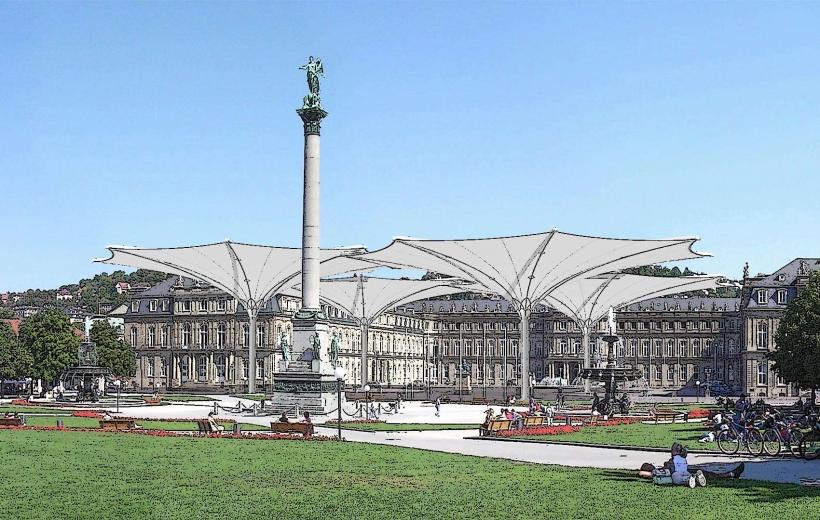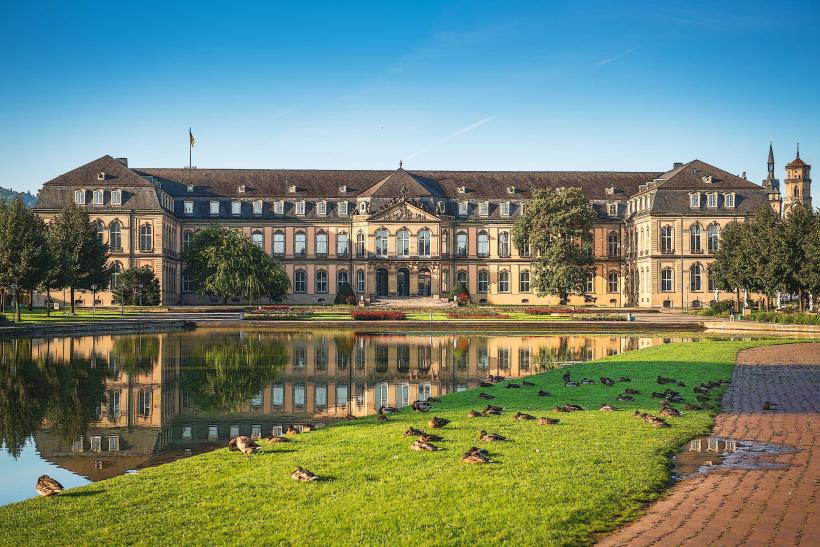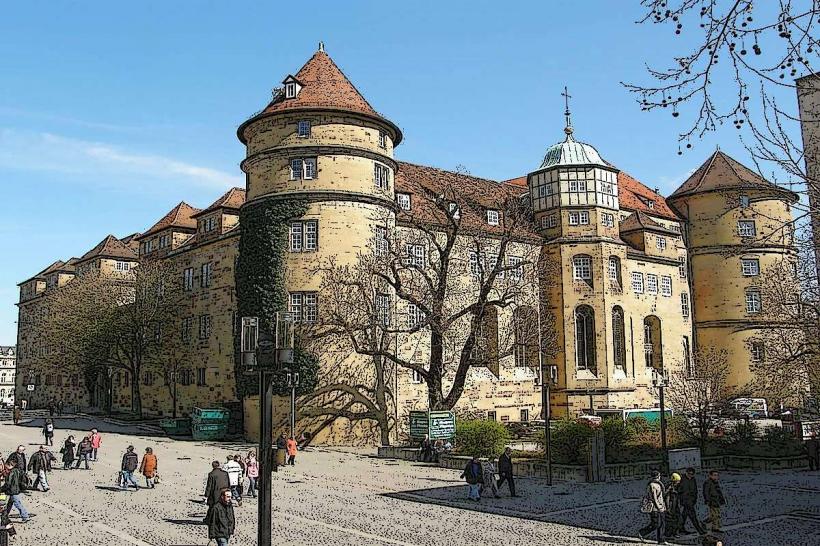Information
Landmark: Wilhelma Zoo and Botanical GardenCity: Stuttgart
Country: Germany
Continent: Europe
Wilhelma Zoo and Botanical Garden is one of the most famous attractions in Stuttgart, Germany. It combines a zoological garden with a botanical park and offers visitors a unique opportunity to explore a vast collection of animals, plants, and historical architecture. The Wilhelma is a perfect blend of nature, conservation, and cultural heritage, making it a must-visit destination for both locals and tourists.
Overview
- Name: Wilhelma Zoo and Botanical Garden
- Location: Stuttgart, Germany
- Founded: In 1846, by King Wilhelm I of Württemberg, hence the name "Wilhelma."
- Area: The park covers 30 hectares (74 acres) of land.
History and Background
Wilhelma was originally designed as a royal pleasure garden and private zoo for King Wilhelm I. The king’s vision was to create a grand space that combined the beauty of nature with exotic plants and animals. The garden was designed in the Moorish architectural style, with influences from Spain and the Islamic world, creating an exotic and culturally rich environment.
The zoo and botanical gardens gradually expanded over time. In the 20th century, Wilhelma became open to the public, and today it is one of the largest and most important zoos in Germany. The zoo is renowned for its dedication to animal conservation, research, and its exceptional animal enclosures.
Zoo and Animal Exhibits
The Wilhelma Zoo is home to a wide variety of animals from all over the world, including both common and endangered species. It features over 1,000 species and is one of the most species-diverse zoos in Germany.
Tropical House:
- The Tropical House houses animals and plants from tropical regions. Visitors can experience animals like monkeys, reptiles, and birds, surrounded by lush greenery that mimics the rainforests of Central and South America, Asia, and Africa.
Aquarium:
- The Aquarium showcases a range of aquatic life, including fish, amphibians, and invertebrates. The exhibit has a large collection of species from freshwater and marine environments, offering a great opportunity to explore life underwater.
African Savannah:
- The African Savannah exhibit is home to iconic animals such as elephants, giraffes, zebras, and antelopes, which roam in vast, open spaces designed to resemble the savannahs of Africa. The enclosures are spacious and designed to mimic the natural habitat of the animals, allowing them to move freely.
Big Cats:
- Wilhelma Zoo is also home to a number of large cats, including lions, tigers, and leopards. The zoo focuses on conservation efforts to protect endangered big cat species and provides educational programs about their habitats and behavior.
Penguins and Polar Bears:
- Visitors can enjoy watching penguins in the Antarctic section and see polar bears in large, well-designed enclosures. These exhibits are part of the zoo's efforts to create habitats that closely mimic the animals' natural environments.
Birds of Prey:
- Wilhelma is home to an impressive collection of birds of prey, including eagles, hawks, and owls. The zoo offers daily bird shows where visitors can learn more about the incredible flying skills of these magnificent creatures.
Other Animals:
- The zoo also features a diverse array of primates, reptiles, amphibians, pandas, and kangaroos, among many other animals. It provides educational programs and opportunities for visitors to engage with the animals in informative and fun ways.
Botanical Gardens
Wilhelma is also a botanical garden, home to over 6,000 species of plants. The garden's lush landscapes and diverse plant life make it a stunning place to visit year-round. Some of the highlights of the botanical section include:
Historical Greenhouses:
- The historical greenhouses, built in the 19th century, are one of the main attractions of Wilhelma. These glass buildings showcase rare plants from different climates, including tropical, subtropical, and Mediterranean species. They are a highlight for plant lovers and horticulturists alike.
Moorish Architecture:
- The garden features several structures built in Moorish style, including arches, domes, and intricate tilework that provide a unique visual appeal. These buildings, originally constructed as part of the royal palace grounds, add an exotic and architectural charm to the garden.
Rose Garden:
- The Rose Garden in Wilhelma is another must-see area, with hundreds of different varieties of roses in full bloom during the spring and summer months. It offers a colorful and fragrant experience for visitors.
Mediterranean Garden:
- This area features plants from the Mediterranean region, including olive trees, lavender, and citrus trees. The design of the garden is inspired by the landscapes of southern Europe, and it’s a peaceful place to walk and enjoy the beauty of nature.
Alpine Garden:
- The Alpine Garden showcases plants that thrive in high-altitude environments. Visitors can see a variety of mountain plants from regions such as the Alps and Himalayas, offering a glimpse into these unique ecosystems.
Water Gardens:
- The water gardens feature beautiful ponds and water lilies, providing a serene environment for visitors. The water features enhance the natural beauty of the garden, with rippling water and aquatic plants creating a tranquil atmosphere.
Conservation and Education
Wilhelma is deeply involved in animal conservation, focusing on the preservation of endangered species. The zoo participates in various international breeding programs, aiming to protect and reintroduce threatened species into the wild. Education is also a key component of the Wilhelma experience, with interactive exhibits and educational programs that teach visitors about biodiversity, conservation efforts, and the importance of protecting wildlife.
Visitor Experience
- Opening Hours: Wilhelma is open every day of the year, with longer hours during the summer months and shorter hours in winter. It is advised to check the official website for updated hours before visiting.
- Admission: Entrance fees vary depending on the time of year and age group, with discounts for children, students, and groups. Tickets can be purchased online or at the entrance.
- Facilities: The park has a range of facilities for visitors, including restaurants, cafes, and gift shops, making it a convenient and comfortable place to spend a day with family or friends.
- Accessibility: Wilhelma is accessible to visitors with disabilities, with wheelchairs available for rent and well-maintained paths throughout the park.
Conclusion
Wilhelma Zoo and Botanical Garden in Stuttgart offers a unique and enriching experience for anyone interested in nature, animals, and plants. Its combination of a zoo and botanical garden, along with historical architecture and stunning landscapes, makes it a must-see destination for visitors of all ages. Whether you're exploring the tropical rainforests, admiring the rare plant species, or observing animals in their carefully designed habitats, Wilhelma provides an unforgettable experience.









